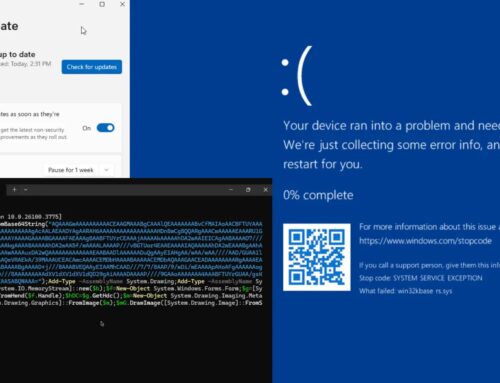
Global Authorities Shared IoCs and TTPs of Scattered Spider Behind Major ESXi Ransomware Attacks
The global cybersecurity landscape is under constant siege, with sophisticated threat actors continually refining their tactics. A recent urgent advisory from international cybersecurity agencies has cast a stark light on the escalating threat posed by the Scattered Spider cybercriminal group. This collective has intensified its attacks, specifically targeting critical infrastructure and commercial facilities, with a worrying pivot towards exploiting ESXi environments and deploying novel ransomware strains like DragonForce. Understanding their evolving tactics, techniques, and procedures (TTPs) and identifying key Indicators of Compromise (IoCs) is paramount for organizations seeking to fortify their digital defenses against these high-impact ransomware attacks.
Understanding Scattered Spider: A Persistent Threat
Scattered Spider, also known by various aliases such as Starfrost, UNC3944, and Scattered Spider Ransomware, is a financially motivated cybercriminal group notorious for its aggressive social engineering tactics and its ability to rapidly adapt its attack methodologies. Initially known for SIM-swapping and gaining initial access through highly convincing phishing and social engineering campaigns, the group has demonstrably shifted its focus to more lucrative targets within the critical infrastructure and commercial sectors. Their operations are characterized by a high degree of technical prowess combined with a remarkable ability to manipulate human targets.
Evolving Tactics: Social Engineering and ESXi Exploitation
The latest international advisory highlights a significant evolution in Scattered Spider’s TTPs. While their foundational reliance on sophisticated social engineering for initial access remains, the methods for exploiting this access have become more devastating. The group leverages stolen credentials or gains access through initial compromise, then escalates privileges to achieve wider network infiltration. A critical shift observed is their increased focus on exploiting ESXi environments, particularly virtual machines (VMs), for ransomware deployment. This targets the core virtualization infrastructure, leading to widespread disruption and data unavailability for affected organizations.
Their social engineering campaigns are exceptionally refined, often impersonating IT or help desk personnel to coax employees into divulging credentials or installing remote access tools. Once inside, they move quickly, often leveraging legitimate tools for malicious purposes, a tactic known as “Living Off the Land” (LotL), to evade detection. The advisory specifically mentions the use of new DragonForce ransomware deployment, indicating a continuous development of their offensive toolkit.
Key Indicators of Compromise (IoCs) and TTPs
Organizations must be vigilant in identifying the tell-tale signs of Scattered Spider activity. While specific IoCs can vary as the group evolves, common themes include:
- Suspicious login attempts from unusual geographies or new devices.
- Use of remote access tools (e.g., AnyDesk, TeamViewer) not typically sanctioned by the organization.
- Phishing attempts impersonating internal IT support or senior management.
- Unauthorized access to virtualization platforms (e.g., VMware vCenter, ESXi hosts).
- Presence of unauthorized executables or scripts on ESXi hosts.
- Rapid encryption of virtual machine disk files (VMDKs) and configuration files.
- Unusual network traffic patterns indicative of data exfiltration or command-and-control (C2) communications.
Their TTPs typically follow a familiar ransomware kill chain, but with added sophistication:
- Initial Access: Primarily sophisticated social engineering, phishing, and credential stuffing.
- Execution: Use of legitimate remote access tools, PowerShell scripts, or custom malware.
- Persistence: Creation of new user accounts, scheduled tasks, or altering existing configurations.
- Privilege Escalation: Exploiting misconfigurations or vulnerabilities, often targeting Active Directory.
- Defense Evasion: Disabling security tools, clearing logs, and using LotL techniques.
- Credential Access: Dumping credentials from memory (e.g., Mimikatz) or harvesting from unencrypted sources.
- Discovery: Network scanning, identifying critical systems and data, mapping ESXi environments.
- Lateral Movement: RDP, SMB, and other administrative protocols to spread across the network, targeting ESXi hosts.
- Collection: Staging data for exfiltration.
- Exfiltration: Using cloud storage, FTP, or other protocols to transfer stolen data.
- Impact: Deployment of ransomware (now including DragonForce) on ESXi hosts, encrypting VMs and rendering them inoperable.
While the advisory does not specify new CVEs associated with this particular campaign, it’s wise to ensure all critical infrastructure aCVE-2021-21985, CVE-2021-22005nd especially ESXi environments are patched against known vulnerabilities, such as those related to arbitrary file upload or authentication bypass, for example, CVE-2021-21985 or CVE-2022-31699, which have historically been exploited in ESXi environments.
Remediation Actions and Protective Measures
Mitigating the threat from Scattered Spider requires a multi-layered, proactive defense strategy:
- Strengthen Social Engineering Defenses:
- Conduct regular, realistic security awareness training focusing on phishing, vishing, and impersonation attempts.
- Implement robust email filtering and anti-phishing solutions.
- Educate employees on verifying requests for sensitive information or remote access, especially if unsolicited.
- Enhance Credential Security:
- Mandate Multi-Factor Authentication (MFA) for all services, especially for remote access, VPNs, and critical systems like ESXi, vCenter, and Active Directory.
- Implement strong, unique passwords and regularly rotate them for administrative accounts.
- Utilize privileged access management (PAM) solutions to control and monitor access to sensitive systems.
- Secure ESXi and Virtualization Environments:
- Patch and Update: Immediately apply all security patches and updates for ESXi hosts, vCenter Server, and associated VMware products. Regularly check for new security advisories from VMware.
- Network Segmentation: Isolate ESXi hosts and vCenter servers on a dedicated management network, separate from production networks.
- Restrict Access: Limit direct access to ESXi hosts and vCenter to only essential personnel and enforce the principle of least privilege.
- Harden Configuration: Follow VMware security best practices for hardening ESXi and vCenter. Disable unnecessary services and ports.
- Enable ESXi Lockdown Mode: Where appropriate, enable lockdown mode to prevent direct interactive logins to ESXi hosts.
- Implement Robust Endpoint Detection and Response (EDR):
- Deploy EDR solutions across all endpoints, including servers and workstations, to detect anomalous activity, Living Off the Land (LoTL) techniques, and potential ransomware deployment.
- Network Monitoring and Segmentation:
- Implement network segmentation to contain potential breaches and limit lateral movement.
- Actively monitor network traffic for suspicious patterns, C2 communications, and data exfiltration attempts.
- Regular Backups and Recovery Plan:
- Maintain immutable, offline backups of all critical data, including VM configurations and disk images.
- Regularly test your data recovery plan to ensure business continuity in the event of a successful ransomware attack.
- Incident Response Plan:
- Develop and regularly test a comprehensive incident response plan specifically for ransomware attacks, focusing on rapid containment, eradication, and recovery.
Recommended Tools for Detection & Mitigation
| Tool Name | Purpose | Link |
|---|---|---|
| VMware vCenter Server | Centralized management and monitoring of ESXi hosts. Essential for patching and configuration. | https://www.vmware.com/products/vcenter-server.html |
| CrowdStrike Falcon Insight XDR | Endpoint Detection & Response (EDR) and Extended Detection & Response (XDR) for detecting advanced threats and behaviors. | https://www.crowdstrike.com/products/endpoint-security/falcon-insight-xdr/ |
| Microsoft Defender for Endpoint | Comprehensive EDR platform integrated with Microsoft ecosystems. | https://www.microsoft.com/en-us/security/business/endpoint-security/microsoft-defender-for-endpoint |
| Proofpoint Email Protection | Advanced threat protection for email, focusing on phishing and imposter emails. | https://www.proofpoint.com/us/products/email-protection |
| NIST Cybersecurity Framework | Provides a framework for organizations to manage and reduce cybersecurity risk. Offers guidance for identifying, protecting, detecting, responding, and recovering. | https://nvlpubs.nist.gov/nistpubs/CSWP/NIST.CSWP.04162024.pdf |
Conclusion
The updated advisory from international authorities serves as a critical warning: Scattered Spider remains a highly adaptive and dangerous cybercriminal group. Their shift towards widespread ESXi ransomware attacks, coupled with sophisticated social engineering and the deployment of new strains like DragonForce, represents a significant threat to global critical infrastructure and commercial facilities. Organizations must prioritize robust security measures, focusing on comprehensive social engineering training, stringent credential controls, and meticulous hardening and continuous patching of virtualization environments. Proactive defense, coupled with a well-rehearsed incident response plan, is essential to withstand the relentless evolution of these advanced threat actors.





